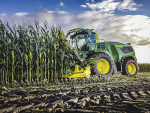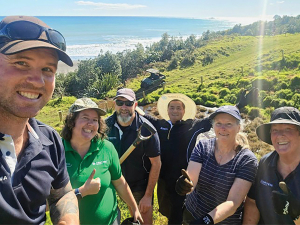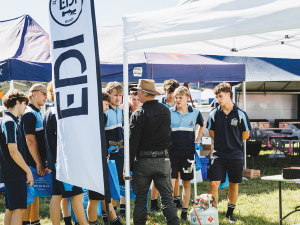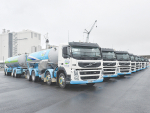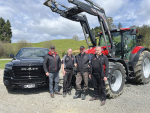In the first of two articles focusing on electrification in New Zealand, Leo Argent talks with Mike Casey, operator of the 100% electric-operated Electric Cherries orchard and founder of advocacy group Rewiring Aotearoa.
Based out of Cromwell in Otago, Electric Cherries has 9,300 cherry trees across 6 hectares and hundreds of workers at peak season, producing around 80 tonnes of cherries per year.
When Casey first began setting up the all-electric orchard, he strove to source as much machinery as possible from New Zealand shelves, with many road vehicles sourced directly from the local Hyundai dealership.
When he could not find machinery in New Zealand, he bought from overseas. He bought an electric tractor from San Francisco and electric frost fighting fans from South Africa.
Where electric machinery could not be sourced from New Zealand or overseas, Casey instead builds or converts onsite.
"Recently we have converted an old 1980s Hilux to electric and we've also built our own electrical foley sprayer which runs off the back of our electric tractor. You try to find it in New Zealand, but if you can't, you look around the world and as a last resort you build it yourself."
First purchased as a single house with a single-phase electric connection, converting the lot into a full orchard required completely upgrading the switchboards, transformers and running cables to the necessary locations. Solar panels were also installed on farm to generate energy that goes directly into the farm's power grid.
"Very often our electrician comes out to do certain things in the electric space so we can do the job we need to do; they've become part of the furniture," explains Casey. "We have five vehicle chargers at different areas of the farm, like one inside our shed for the tractor."
Despite going througb what he called 'the hardest possible transition', Casey believes it was both manageable and profitable in the long run and adds that for more established farm locations it would be notably easier.
"Many farmers may already run a milking shed or irrigation pivot, at which point they have three phase and quite large grid connection sizes already. That means all the electrician needs to do is run cables to where those cables need to go to put in charging points."
While Casey is proud of his operation, he does not think farmers should immediately dispose of their old machines and go down the 100% electric path. However, he believes that once that machinery is worn out, electrification is the most sensible option.
"There are grants available which the Government has announced recently and what I can categorically say is that, in many cases, you're going to be financially better in the long run getting a new electric machine and infrastructure on farm. They may be more expensive upfront, but it is going to be cheaper than buying or financing diesel machines and fuel for the rest of that machine's lifetime.
"We're not virtue signalling, saying 'this is something you should do in the name of climate'. What we're saying is this is in your best economic interest. The best way to explain is that if you install solar on your farm, that you finance on your mortgage, total costs work out to around 7 cents per kilowatt hour (a litre of diesel is around 2-3.5 kilowatt hours of electricity averaging $1.50-$2 per litre). If you buy it from the grid that's around 25-35 cents per kilowatt hour.
"So, when you look at it that way there is a significant saving opportunity which in the long run is far more beneficial to chase those savings, even though it requires some capital investment."






